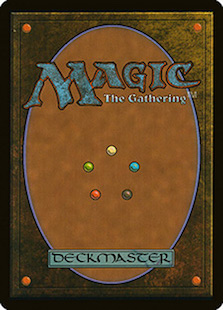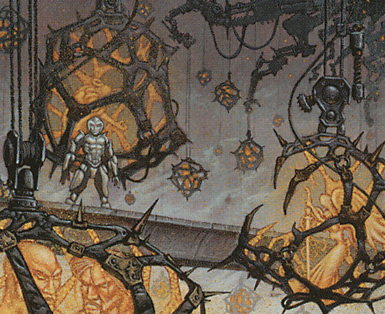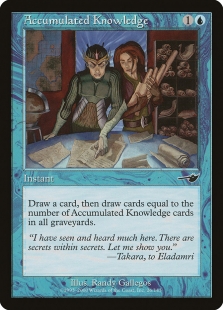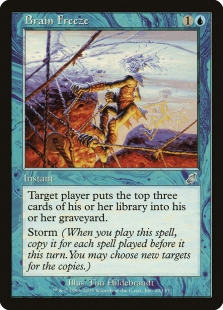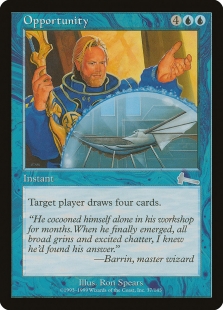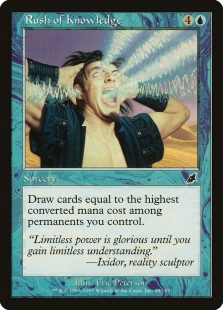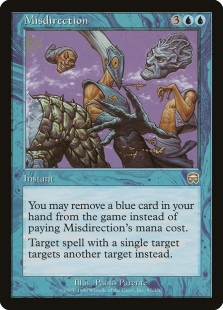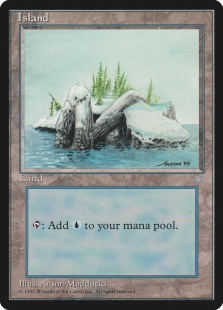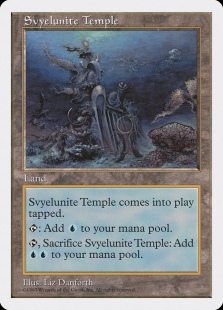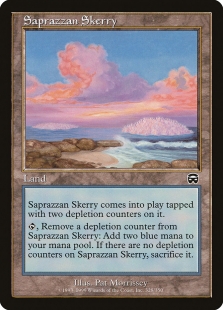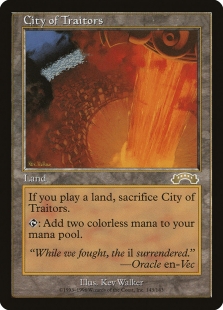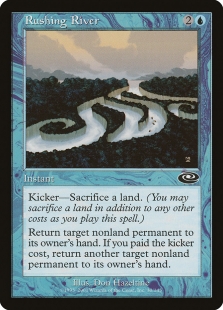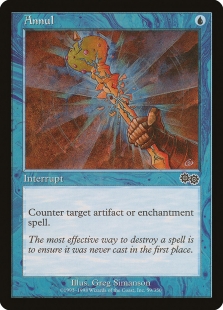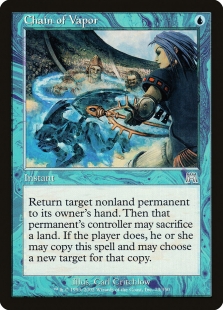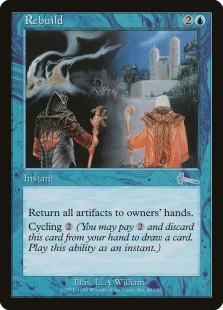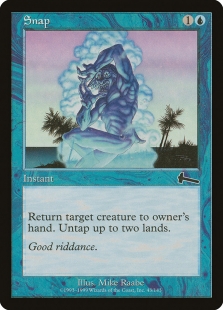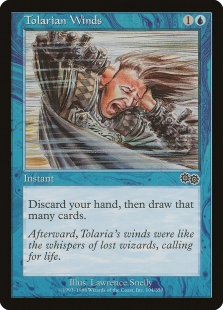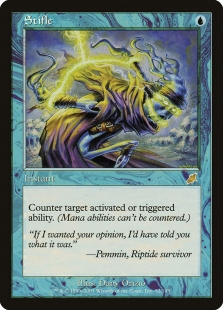This is a guest article by Iñaki Puigdollers from Spain. Enjoy! / Martin
Introduction
Back in late June 2022, I decided to go to the European Championships. What should I play? I had four months to get ready but my time was very limited due to my personal situation. I had two options—either go play a top tier deck or go and “do my thing”.
Common sense and PVDR advise say big tournaments are not for innovating, but rather to play what you play well and what has been proven consistent in the current metagame. So, if I had to play an established deck, first I had to figure out what the meta would be, not only to see what my options were, but also to prepare and playtest against the expected field. After checking data from recent IRL tournaments (online leagues are not a good indicator of how big IRL tournaments will look like), some Facebook posts and interesting discussions with some peers (mostly Nacho Barrachina and Iñaki Jiménez, we will come to the props on them later) this is the list of decks I considered as well-positioned and well-represented in the current metagame:
- Survival Elves
- Oath Parfait
- Sligh
- UW Control (including both Tide and Landstill variants, but having in mind Tide as the main)
- Goblins
- Enchantress
- Devourer combo
- Hermit nought
- The Rock
Even though I have played most of the decks in the list, I don’t consider myself an expert in any of them, maybe the closest being Enchantress, and if you want to have chances to win a tournament like the Euro Champs, you should aim to be the best player in the room with your archetype thus, at this point, I decided that I should “do my thing”.
And what is my thing? My thing is mostly to play a deck that I feel comfortable with, that is slightly under the radar and has a decent match-up against the biggest offenders in the format. After some consideration, I realized that there is a deck with a lot of potential and, in my opinion, hugely unrefined—Dream Halls combo.
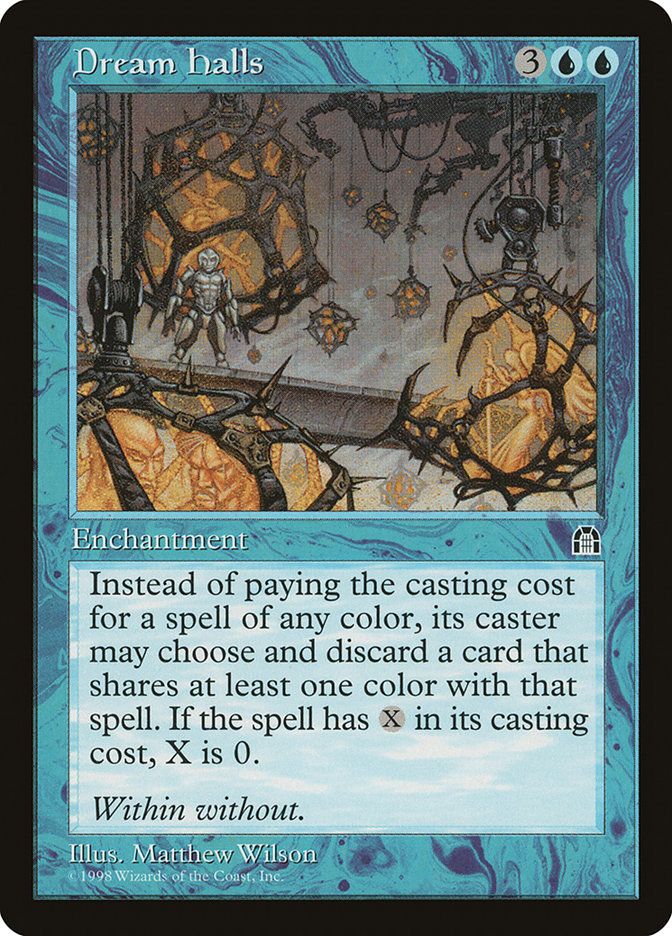
Initial testing stage
Great, I had chosen a deck. Now it was time to build a list that felt strong enough and start testing and adapting to see how far we could get.
Out of all the Dream Halls lists that I’ve seen in the past there was one that felt better than all others, Galen Lemei’s:
Dream Halls by Galen Lemei, Premodern Online Monthly February 2021 4 Lotus Petal 1 Portent 4 Sleight of Hand 3 Arcane Denial 4 Accumulated Knowledge 4 Impulse 3 Brain Freeze 3 Intuition 1 Cunning Wish 4 Meditate 4 Dream Halls 3 Rush of Knowledge 4 Opportunity 2 City of Traitors 2 Saprazzan Skerry 3 Ancient Tomb 3 Flooded Strand 4 Island Sideboard 4 Svyelunite Temple 3 Annul 2 Stifle 1 Arcane Denial 1 Brain Freeze 3 Hydroblast 3 Chain of Vapor 1 Rushing River 1 Intuition
When I saw Galen’s list, it really caught my eye. Not playing terrible “win more” cards was definitely a thing I liked, e.g. Mana Severance or Reminisce. This list seemed very streamlined and clearly built by a seasoned and dedicated combo player.
After some goldfishing and further analyzing the list, I realized that there was some incoherence between the mana base and the expected game plan. The deck played only seven lands that tap for U on turn one, making it very hard to play Sleight of Hand early in the game, as well as Impulse. Also, the later you go into the game as a combo deck, the lower the impact and the higher the risk of playing cantrips, so I decided to chop them and add more redundancy in the form of Merchant Scrolls together with some silver bullets.
At this point, Nacho, Iñaki and I decided to join efforts to prepare for the Euro Champs, and started having daily discussions about the deck. Their input has been critical in getting to the final list.
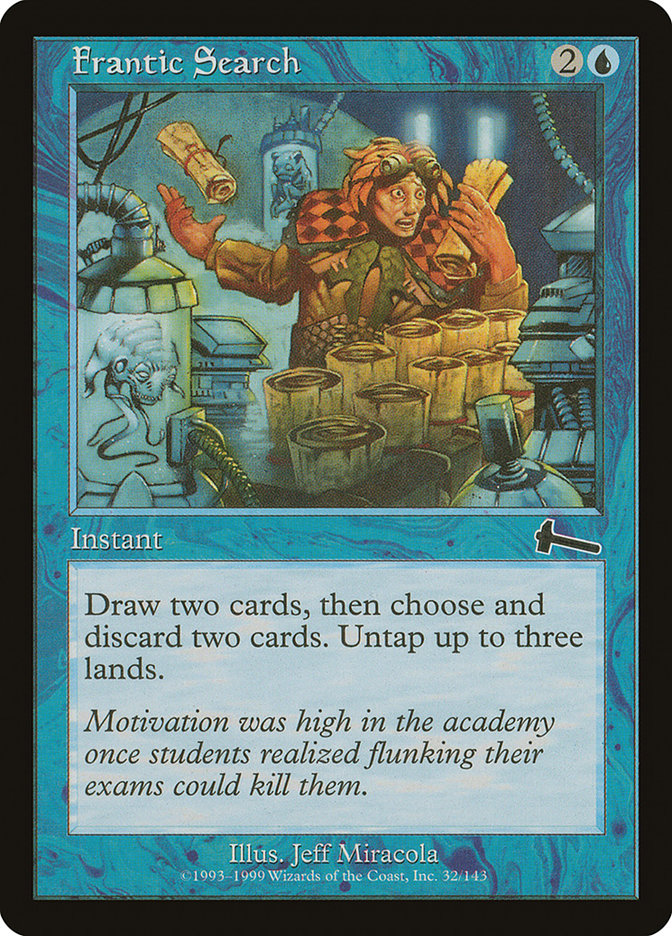
Iñaki (Jiménez, not me!) suggested giving Frantic Search a go. I found this was a brilliant suggestion because it added a lot of good things to the deck. First, it helped speed up the combo generating mana with the sol lands. Second, it filtered useless cards when going off, mostly the excess lands, and it also untapped your lands which means that you will be able to hardcast at least one extra spell with your mana which means that you need one less blue card in hand, diminishing the chances of fizzle overall. So this was the list I felt comfortable to start testing with:
The deck was performing well during the initial testing and Merchant Scroll was either great or terrible, no middle ground. In the slower match-ups Merchant Scroll was amazing ,allowing me to go fetch the important pieces or protection before going off. But in the fast-paced match-ups it felt really clunky, the mana base did not really support turn 2 Merchant Scroll into turn 3 Intuition and, even if it did, landing a Dream Halls turn 4 was too late vs the non-forgiving aggro decks like Sligh, Goblins or Elves.
At this point, Nacho suggested changing Merchant Scroll into Cunning Wish. This made a lot of sense. On the one hand, you are getting rid of the clunky sorcery speed. On the other hand, it freed up some main deck space and allowed me to answer hate pieces in a timely manner. Last, but not least, including Cunning Wish, also opened up the more than interesting possibility of adding a small splash to help fight some of the most relevant hate pieces.

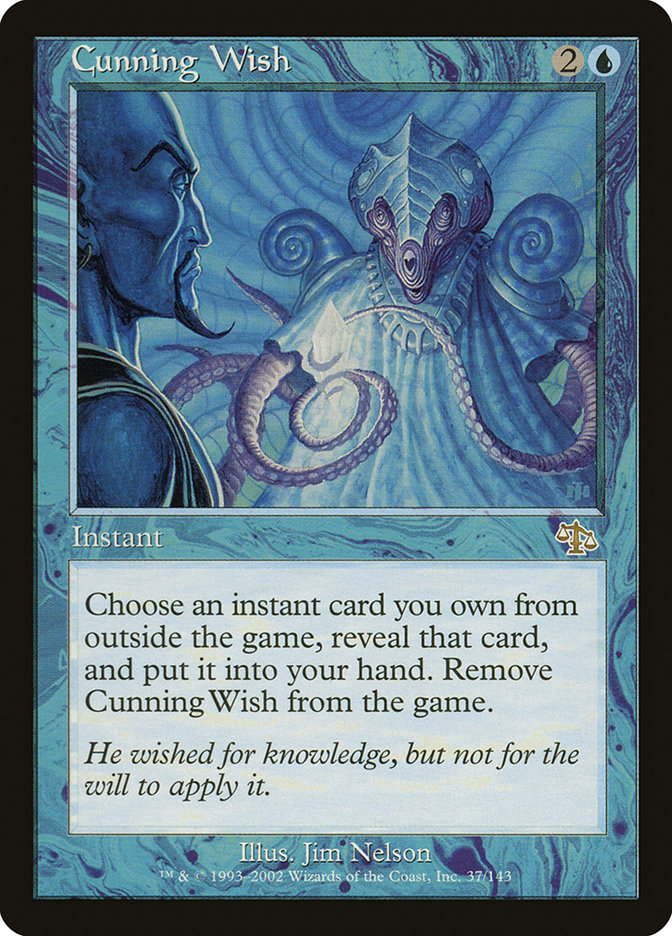
Which one is better?
I also added 1x Tranquil Domain and 1x Abeyance in the sideboard and in order to be able to play them I also changed 4x Island for 4x Gemstone Mine.
The role of Tranquil Domain is no other than the capacity of beating a resolved Solitary Confinement, even if it is protected by Sterling Grove (and we don’t really care about Karmic Justice).
The first question that might come to your mind is “but, doesn’t Tranquil Domain also destroy your Dream Halls?” Well, yes, but there are ways to circumvent this issue. The most common way to play Tranquil Domain to destroy Solitary Confinement is as follows:
- With enough storm count and Solitary Confinement in play, play Brain Freeze targeting yourself.
- With the storm trigger on the stack, play Tranquil Domain and blow the board.
- After Tranquil Domain resolves, proceed resolving the storm copies targeting your opponent.
There are other ways to play Tranquil Domain and still maintain your Dream Halls on the board if you need it, for example you cast a second Dream Halls by pitching a blue card and while it is on the stack you respond with Tranquil Domain, but this play is not needed very often because Solitary Confinement is only a concern at the very end of your combo sequence.
The reason why I added Abeyance, was to fight the increasing appearance of Seal of Cleansing and Aura of Silence in the current metagame. At the same time, Abeyance is a great card against permission based decks, but unfortunately, due to the nature of the Dream Halls strategy we cannot abuse the off-color cards so, one in the sideboard is just the right amount.
As I said above, 4x Gemstone Mine were added to support that minor splash. However, Gemstone Mine is not the best land you want to pair up with Frantic Search. For this reason, I ended up replacing them with 4x Adarkar Wastes. It might seem a bit problematic because of Tranquil Domain, but since the purpose of Tranquil Domain is almost exclusively to fight Solitary Confinement, and this happens at the end of your combo sequence when you most certainly have drawn multiple Lotus Petal, it ended up being irrelevant. However, you really need to have early access to white mana if you need to play Abeyance and, honestly I would love to add more white sources but the cost of adding them was too high so I decided to accept this trade-off.
So with this, I did some more testing and results were quite good. The deck managed to out-race fast aggro decks. It could even steal a game on the draw vs a perfect Goblin Lackey into Goblin Warchief hand, or go off in response to a Nantuko Vigilante activation and still win.
So after some tweaking of the mana base I had my deck ready for the Euro Champs!
Unfortunately, as I said, I couldn’t go to the, but not everything was lost! A month later we had the Spanish Nationals! This meant another opportunity to give the deck a chance to debut, and this time we had a new weapon to fight with…

As you all know, during the Euro Champs it was disclosed that Show and Tell is joining the Premodern party. It was pretty obvious that I had to test it out in my Dream Halls decks and see whether it helped somehow.
Show and Tell version
When you want to test a new card, I think it is always advisable to test the full playset to see the impact it might have in the game play more often, so I did this with Show and Tell. But what should I replace? What role would Show and Tell play in my deck? I figured it plays several roles:
- Fights permission. Playing Show and Tell into a counterspell saves your Dream Halls so you can play it later.
- Speeds up your combo. It serves as a ramping spell, reducing the cost of your Dream Halls by two mana, at the cost of one extra blue card.
- Allows to circumvent hate. It is not affected by Aura of Silence taxes, it is immune to Annul and it plays around Meddling Mage, to name the most relevant pieces.
With this in mind, it made sense to replace 3x Arcane Denial and 1x Frantic Search due to the overlapping functions.
However, getting rid of all the permission I played in the deck quickly became a liability. As you know, Dream Halls is a symmetrical effect, this means that your opponents can also pitch cards to play their cards for free. Therefore, they can play hate for free even if they are tapped out, so you need a way to prevent that. For instance if you land a Dream Halls and start to go off by playing a Rush of Knowledge and your opponent plays a Naturalize in response, you should be able to respond to it (hence the importance of having an almost instant speed deck) and try to find an answer so you can continue to go off, the best way to do it is by finding a piece of countermagic which means you need to have some of them across your 75.
While Show and Tell comes with some benefits, as mentioned above, it also has some problems. The most important of them being that is a “do nothing” card if you don’t have Dream Halls in hand. For this reason, and after some testing, I decided to trim the number of Show and Tell down to three and bring back the third Frantic Search because it can also speed up the combo by one turn but is a lot more flexible in the different stages of the game. Having 3x Show and Tell feels great because you can Intuition for it if need be.
All in all, this is the final version of the deck I would play at the Spanish Nationals if I could go, which unfortunately is not the case.
Game plan and basic lines of play
Your goal is to land Dream Halls as safely as possible, but note that this is not necessarily the same as “as fast as possible”! However, doing it early has some benefits, so here are some of the lines that allow you to accelerate into it:
- Turn 1 Saprazzan Skerry into turn 2 Ancient Tomb/City of Traitors + Frantic Search/Lotus Petal –> Dream Halls
- Turn 1 Lotus Petal + Ancient Tomb/City of Traitors + Show and Tell –> Dream Halls
Strong opening hands typically allow you to play Dream Halls on turn 2, or Intuition for it so you can play it on turn 3. To achieve this, the best land you can play turn 1 is Saprazzan Skerry.
Once you have Dream Halls in play you only have to keep playing your draw cards by pitching blue cards, thanks to Dream Halls, until you have generated enough storm count and play one (or more) Brain Freeze to deck your opponent. You can also play an Opportunity targeting your opponent after that to insta-kill them.
Pro tip: whenever possible try to avoid playing Intuition into any of your draw 4+ spells, except Accumulated Knowledge, this will increase your chance of fizzle by a lot. Intuition normally fetches: Dream Halls, Accumulated Knowledge or Show and Tell Later, it is a great card to pitch with Dream Halls in play.
Card breakdown
I have already mentioned some of the design choices during the article but there are some cards that I think deserve better explanation, including my opinion on the optimal number of copies that should be played.
Mana base
4 Adarkar Wastes: it’s a concession needed to play Abeyance, in a metagame full of Seal of Cleansing and Aura of Silence.
4 Saprazzan Skerry + 2 Svyelunite Temple: I started with 3+3 because both have their own strengths. However, the more you play the deck, the more you see that your best turn 1 land is Saprazzan Skerry, it enables turn 2 Intuition or Show and Tell and is still fresh for a turn 3 Dream Halls.
3 Island: those are fillers and provide some stability vs Wasteland. The fact that they don’t deal damage when used is also great given the rest of the mana base. I would play more if I could, and no, I would not play any fetch lands; their “thinning” effect is insignificant compared to the extra points of damage they inflict.
3 Ancient Tomb + 3 City of Traitors: Turn 1 Saprazzan Skerry into turn 2 Ancient Tomb/City of Traitors followed by a Frantic Search means you can play Dream Halls turn 2. I started with 4 Ancient Tomb + 2 City of Traitors because you most likely don’t want to see a second City of Traitors. However, you really want to see the first one, and in some games vs aggro you want the possibility to Intuition for a City of Traitors and go off. I learned this during testing vs Goblins.
4 Lotus Petal: you need four, no discussion. They enable early Show and Tell but also they help you splash some important cards. It also serves as a ramp spell for potential turn 2 Dream Halls. Last, but not least, mid combo they add free storm count and two of them let you play a Brain Freeze.
Business spells
The draw 4+ spells. These are the most important spells, the ones that will help you go off and prevent you from fizzling. Never play less than a full set of these.
38% of the deck are non-blue cards, this means that you can expect to draw one for every three cards, on average. Which means that every four cards it is pretty safe to say that you will draw at least two blue cards, playing 15+ cards (25%+ of the deck) that draw you 4+ cards gives you the capacity of drawing at least one of them every four cards, on average. So, never play less than 15 draw 4+ spells in the deck.
4 Rush of Knowledge: yes it does nothing before Dream Halls gets to the battlefield. However, it is the best draw spell once you are going off. Be careful because it is also your only sorcery spell in the deck. You need to carefully plan when to play it according to what you expect your opponent will do. Never play less than four.
4 Meditate: great draw 4. It has the bonus that can be played easily before going off to fight through hand disruption.
4 Opportunity: this is not only a draw 4, it is also the card that might help you win game 1 vs Gaea’s Blessing, as follows:
- Play Brain Freeze
- Gaea’s Blessing gets to the graveyard and triggers
- with Gaea’s Blessing trigger on the stack, play Brain Freeze (repeat 1 to 3 as many times as Gaea’s Blessing trigger from your opponent’s deck)
- Once the library of your opponent is depleted with all Gaea’s Blessing triggers on the stack, play Opportunity targeting your opponent to win the game!
It is not that strange that you can also play Opportunity to fight hand disruption, similarly to Meditate, if need be.
4 Accumulated Knowledge: yes, it is not a draw 4 per se, but is very close to and comes with some benefits.
- You can play Intuition into Accumulated Knowledge in the slower games. This is specially relevant vs permission or hand disruption decks.
- Every copy of Accumulated Knowledge can be discarded for value with Dream Halls, helping you to make the 2 last copies a draw 3 and draw 4.
A piece of advice: DO NOT play your first and second Accumulated Knowledge in the early game for cycling purposes, if you have to do this, it is very likely you are in a losing situation and should’ve mulliganed better than you did. Keeping a hand with an Accumulated Knowledge to cycle is bad, the mana base does not support it and you are losing the opportunity to make a better use of it (as explained above).
The natural replacement for these would be 4x Concentrate but the fact that they are sorcery (mainly this) and the UU2 cost make them lose the slot in favor of Accumulated Knowledge.
Enablers
4 Dream Halls: no-brainer, the core of your strategy.
4 Intuition: I played around with some numbers. Should I play three in the main and one in the side? That makes it effectively seven Intuition due to the full set of Cunning Wish, right? Well yes, but if your plan is to Cunning Wish into Intuition into Dream Halls, means that you are, best case scenario, going off on turn 4 (or 3 with an extra lucky hand and spending more resources, like a Lotus Petal). This can be too slow for the current pace of the metagame. For this reason, maxing out the odds of drawing either Dream Halls or Intuition creates a faster and more streamlined deck; you want either Dream Halls or Intuition into Dream Halls as your turn 2 play. For the number geeks, increasing the Intuitions from 3 to 4 increase the chances of drawing either 1 Dream Halls or 1 Intuition in the first 8 cards by a 5% (from 65% to 70%, assuming you take no mulligan, it will increase with mulligans).

Other
4 Cunning Wish: it gives flexibility. Enables the possibility of splashing some important cards without having to care about messing up with your combo. It is the reason why the deck is so resistant to hate.
3 Frantic Search: It can speed up the combo by a turn while it will prevent you from fizzling thanks to both of its effects: cycling and untapping.
3 Show and Tell: read all the details above. It does a lot of things at a very low cost.
Sideboard
1 Chain of Vapor + 1 Rushing River + 1 Hurkyl’s Recall: the bouncers and catch’em all answers. Each one of them is great in a slightly different situation. It is good to have this split. I used to run 1x Snap also, but I needed some sideboard space so it was the safest card to cut.
2 Hydroblast + 2 Blue Elemental Blast: you need to buy some time vs the fastest and most aggressive color in the format. Additionally, you need to cope with your opponents Red Elemental Blast and Pyroblast, those are so good against you!
1 Brain Freeze: the last copy, in case you need it. You often play multiple Brain Freeze per game, sometimes simply to counter an Enlightened Tutor or Worldly Tutor. Having four of them across the 75 is important.
1 Tolarian Winds: the anti-fizzle panic button. There are some stages of the game where you end up with 12+ cards in hand that are a bunch of lands, Intuitions, Lotus Petals, Brain Freezes and Cunning Wishes. It does not happen often, but it happens. Tolarian Winds helps you transform those 12+ cards into pure gas. You need to play always thinking you can get to this situation by trying to keep in hand at least 1x Cunning Wish and two extra blue cards (1 to pitch for the Wish and 1 to pitch for Tolarian Winds).
1 Tranquil Domain: your anti Solitary Confinement tech. See above for the best way to play it.
1 Abeyance: great anti permission but also anti Seal of Cleansing/Aura of Silence piece of cardboard. Note that with this, you don’t care how many Seals or Auras they have on the board. 🙂
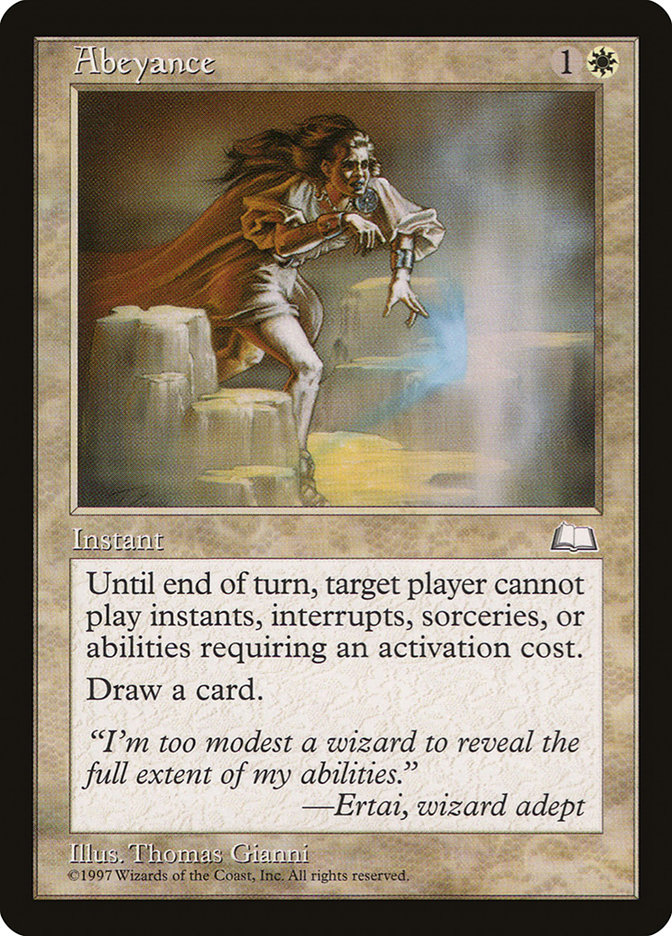

2 Arcane Denial: They are here to fight through some instant speed hate, like Naturalize or Disenchant. You need to plan your turn bearing in mind you might need to fetch for this at instant speed. I think that here the split can be different but always play at least 1x Arcane Denial, but the second copy can be a Dismiss (which nets you a card) or a Rewind (that opens up your mana potentially saving you a blue card pitch), even a Misdirection can be good but the card disadvantage really hurts this deck. I leave this open for further testing.
1 Stifle: this card came in together with Show and Tell. Note that Show and Tell is a symmetric effect, this means that your opponent might play cards like Monk Realist, Seal of Cleansing or Aura of Silence at the same time that you play your Dream Halls. You need 1x Stifle in your 75 to play around those cards if they are landed with Show and Tell. Say you play Show and Tell into Dream Halls and your opponent reveals a Monk Realist, then what you can do is with a Monk Realist trigger on the stack, go fetch your Cunning Wish with instant speed draw cards, and then fetch Stifle to counter that trigger. Again, it is very important that you plan your turn ahead if you think something like this might happen, sequencing the right cards in the right order in this deck is EVERYTHING!
1 Denying Wind: this is my concession to Gaea’s Blessing. It could have been a Tormod’s Crypt due to flexibility but Tormod’s Crypt is not a blue card and this is very relevant in this deck. Although you can win through multiple Gaea’s Blessing, even main deck, it often requires a lot of effort and this can be even more difficult if you need to fight through all the hate, especially in games 2 and 3. Playing Denying Wind right before you go off can simplify a lot of your lines of play, just be careful your opponent does not have a Scroll Rack active to put a Gaea’s Blessing in his deck from his hand after Denying Wind resolve! Also, note that Dream Halls into Denying Wind can be a game win vs some of the low on win conditions decks in the format, e.g. Parfait.
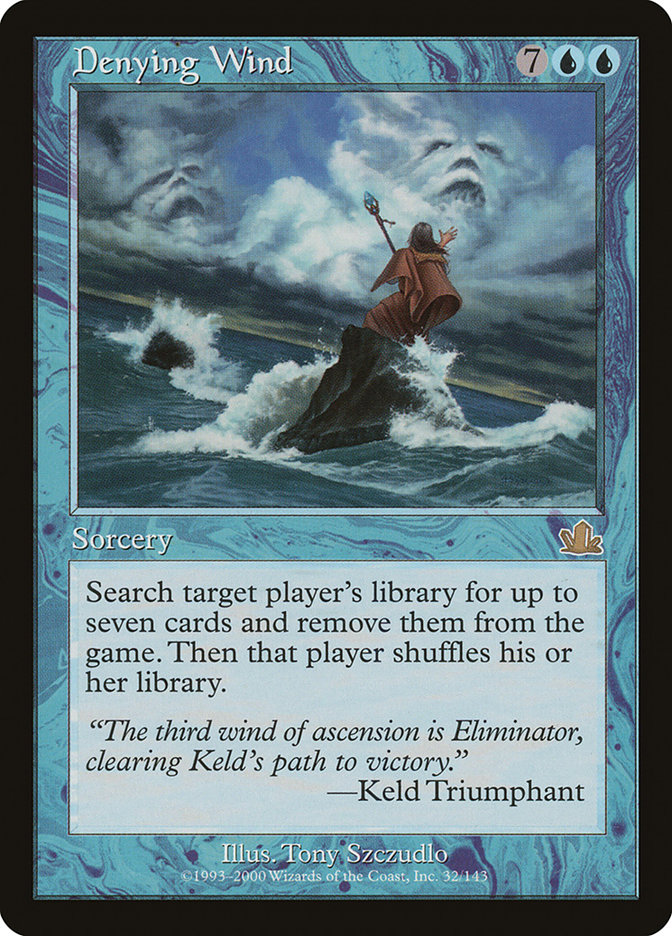
One recurring question people keep asking me is why don’t I play Defense Grid? I agree that Defense Grid can be really useful against permission-based decks, but it is almost a dead card vs all other decks. As a matter of fact the only real permission-based deck I had in mind while building the deck was UW control and those decks can be easily out-resourced with the current 75, your mana generation is faster than theirs and, often, you just need a single piece of protection to get through their defenses. However, it seems that there is a resurgence of Stifle-Nought, and those can be really troublesome. I have no real data against Mono U or UB Stifle-Nought but if they are as bad match-up as I expect I might need to consider adding some Defense Grids or any other card to fight them. You have to bear in mind, though, that Defense Grid is not a blue card and every non-blue card you add to the deck increases the chances you fizzle.
Parting thoughts
I think Dream Halls is the best unrefined deck in the whole format, it has a lot of potential and I think I could be a step closer to a more refined version. The introduction of Show and Tellmade the deck even more resilient and well-rounded.
I am truly sad I will not have the opportunity to give it a real IRL test any time soon and that’s why I decided to write this primer and share it with you, hoping you also like it and help me evolve it even further! Please let me know your thoughts and constructive feedback, I will be more than happy to have endless discussions about the deck. 🙂
– Iñaki
